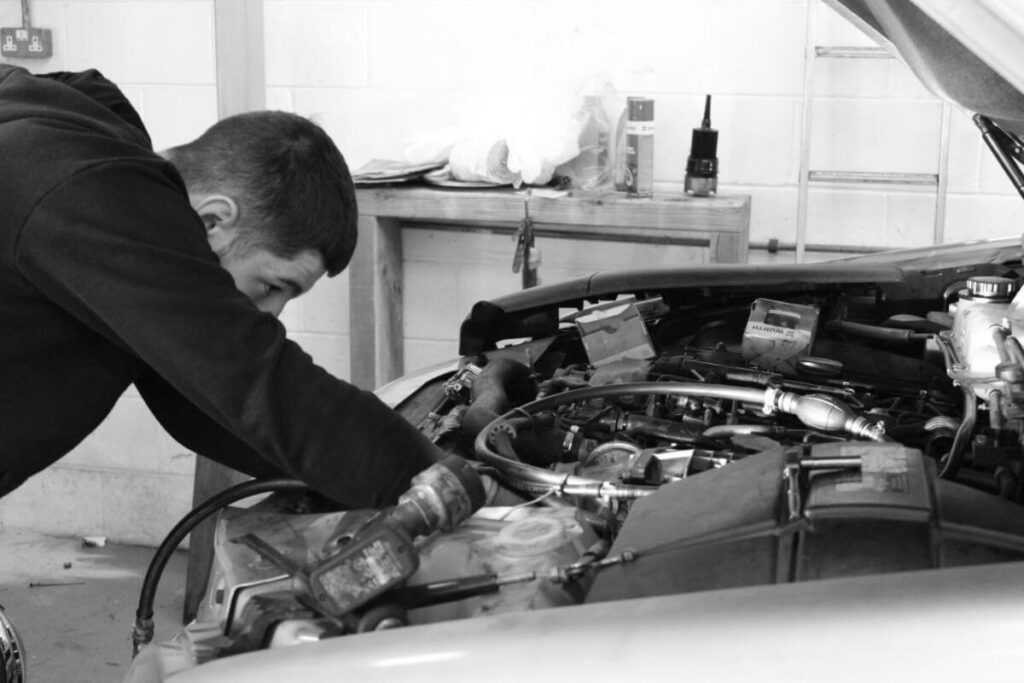
Owning a car, though extremely worthwhile for many, can be an expensive process. From repairs and component replacements to insurance and ever-increasing petrol prices, ownership can set drivers back considerable amounts each year.
One way to try and minimise these costs is by keeping a good level of vehicle maintenance ongoing throughout the year to ensure the vehicle is in good condition at all times. Rather than taking the car to the garage every time you wish to perform a simple check on it, here are some of the areas you yourself can address when carrying out basic vehicle maintenance on your car:
Checking engine oil levels
Oil is a vital component of your engine’s health, functioning not only to lubricate the engine but also clean and cool it, averting any issues of overheating or buildup that could cause it to stop functioning correctly. Engine oil should be checked every two weeks to ensure that you keep an eye on the levels, maintaining the right amount and level at all times.
To check the oil, ensure that your car’s engine is cold and the vehicle is on level ground so as not to sway the results. Open the bonnet of the car and locate your oil tank, removing the dipstick to see how far up the stick the oil leaves a mark. The mark should be between the “F” and “L” marks, with levels close to the “L” mark needing topping up.
Changing oil
For oil that simply needs topping up, there will be simple instructions in all vehicles’ user manuals which can easily be followed. All that is required in this instance is that the right type of oil is added.
Oil should be completely drained at regular intervals – approximately every 10,000 miles – and replaced with new and unused oil to ensure the healthy running of your car in the long run. The instructions on how to carry out this procedure will also be in each car’s manual guide, but if vehicle owners are not confident carrying out this procedure it is guaranteed that the oil will be completely changed with your annual service.
Checking brakes
Brakes are a vital aspect of every vehicle’s safety, with any car with faulty brakes posing a serious threat to the safety of driver, passenger and other road users. You will be able to feel if something is not quite right with your brakes, but never ignore any odd feeling in the brakes as this aspect of a vehicle is too important to ignore.
Brakes should be checked by a professional every 10,000 miles to ensure your utmost confidence in the safety of your car. As well as this, the handbrake in your vehicle should be tested at regular intervals by pulling it on when the vehicle is on an incline. If pulling the brake up takes more than a few clicks before the car is held securely, the cable or rear callipers need to be checked by a mechanic to ensure your vehicle is safe and adequately supported by the handbrake.
Keeping brake fluid levels correct
Keeping the brake fluid levels correct within your vehicle is done by locating the brake fluid reservoir and topping it up to the correct level if and when required. If this process is something you are finding yourself repeating regularly, it is advisable to take the car to a mechanic as there may be a leak of brake fluid; a problem that is not only costly and inconvenient but also dangerous due to the highly toxic nature of the fluid.
Checking tyre pressure
To ensure the efficient running of your vehicle, tyres need to be at the correct pressure at all times. Checks on tyre pressure should be carried out once a week, remembering to test the spare tyre as well. The right pressure for your vehicle’s tyres will be listed in its handbook, and when filling up tyres with air at petrol stations these levels can be adhered to accordingly.
Changing flat tyres
Changing a flat, though daunting to some, is not a complicated process with the right equipment and know-how. Park the car on a flat surface and use the jack to lift your car up from the ground, allowing you to access and remove the wheel by loosening and removing the wheel nuts before taking the wheel off. Next, fit the spare wheel into place, using a wrench to tighten the wheel nuts so that the tyre is secure. At this point, the car can be lowered back down by the jack. It is advisable, for the purpose of cutting costs in vehicle maintenance, to go to your local mechanic and get the flat fixed – something that will save you the time and effort of buying a new one, not to mention the expense!
Here at Oaks Services, we are proud to provide a leading MOT service and servicing work to vehicles throughout Surrey. For more information on any of our products or services, get in touch with our friendly team of experts today and let us get the job done in an efficient yet thorough manner and at a price you can afford.

